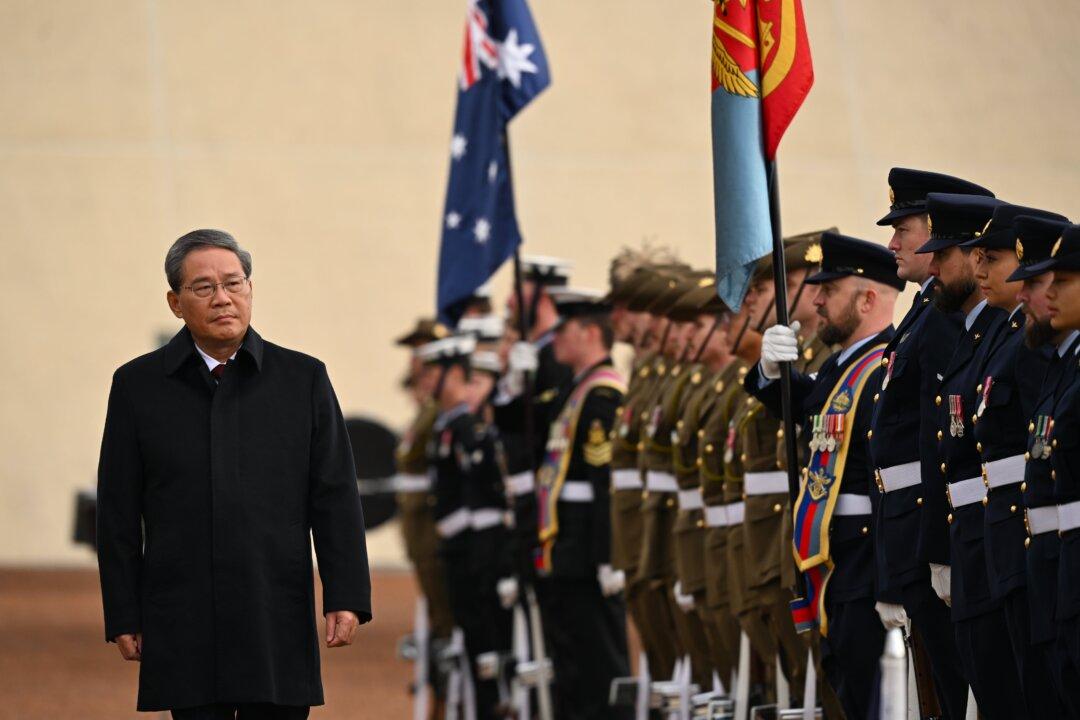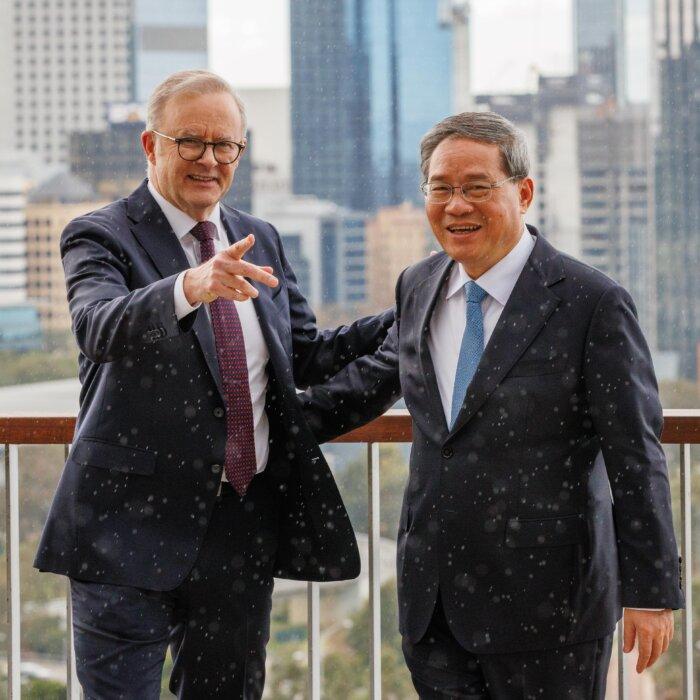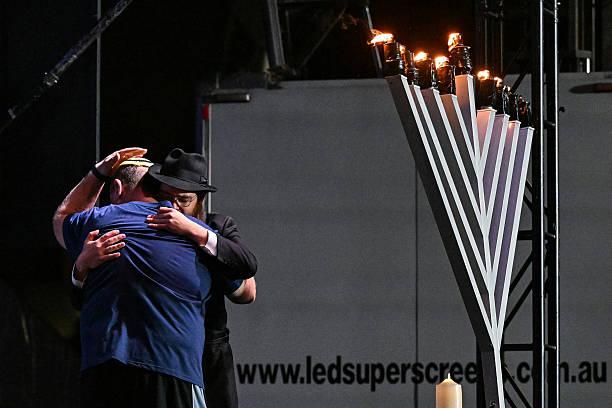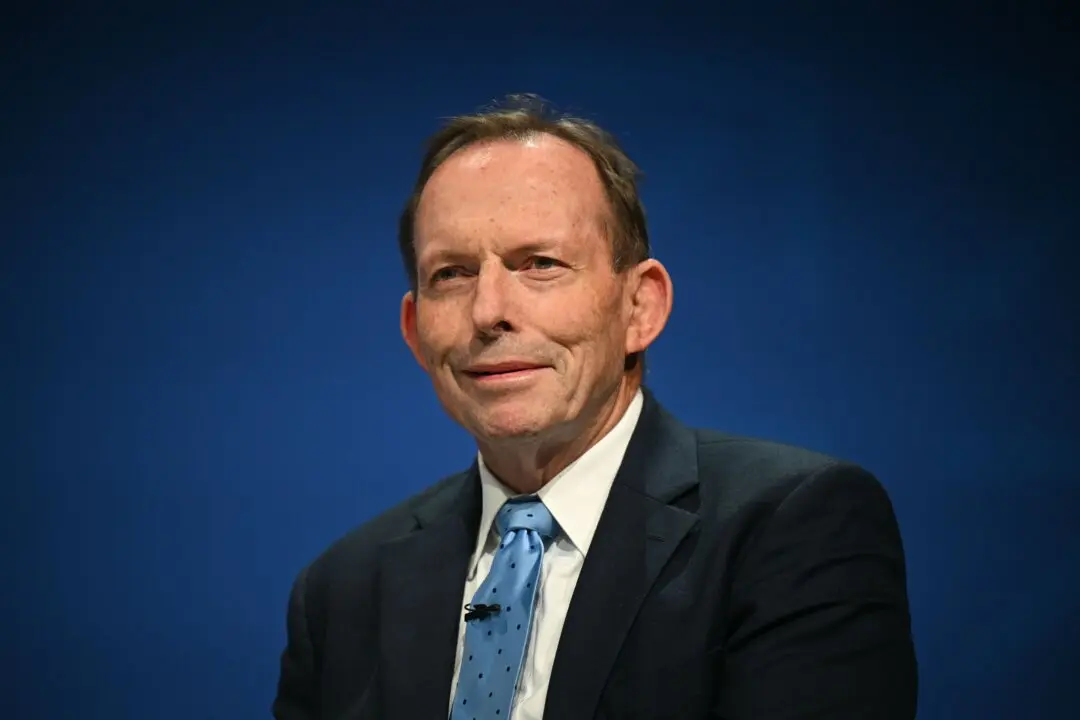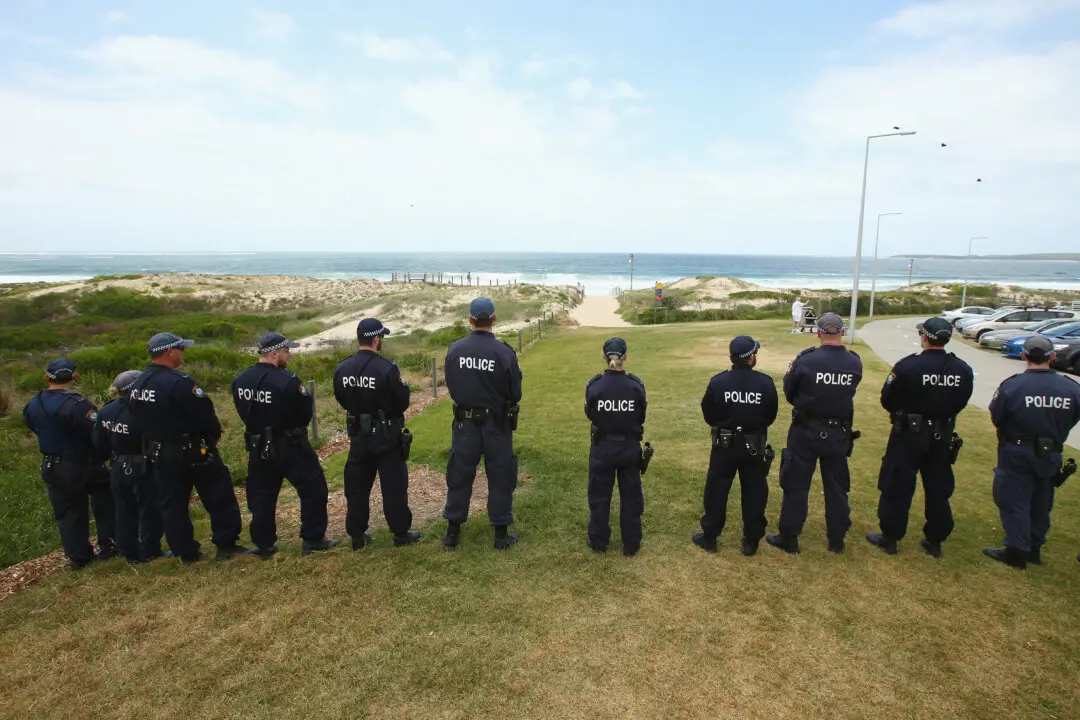After a morning of talks at Parliament House, Australian Prime Minister Anthony Albanese and CCP Premier Li Qiang emerged at what was billed a press conference—but was, in fact, two set speeches with no questions permitted—and offered little insight into what might have been discussed behind closed doors.
Government sources had briefed the media that the prime minister would raise security and trade issues with his opposite number.
However, only the vaguest allusion was made to the former in a brief speech by Mr. Albanese, that focused almost entirely on trade.
The PM offered only a veiled reference to concerns about Beijing’s aggressive actions in the region, particularly in the South China Sea.
“Australia advocates that we should all work together, where no country dominates and no country is dominated, a region where countries, large and small, operate by the same rules that we have all had a say in shaping,” he said.
“I’ve made it clear ... that we will cooperate where we can and disagree we must, and engage in the national interest.”
Mr. Li said he and his Australian counterpart had been “candid” in their talks and reached “a lot of consensus.”
Both countries had recommitted to the Comprehensive Strategic Partnership, and “to mutual respect and trust, and to viewing and handling this region [with] a positive attitude.”
MOUs On Trade, Climate, And Education
The two leaders also signed five memorandums of understanding at the official ceremony.They include agreements on education and research, climate change, and the Australia-China Strategic Economic Dialogue. Two other MOUs include advancing the China-Australia Free Trade Agreement, and the 15th Implementation Program for Cultural Exchanges for 2024-2027.
Both countries will grant one another’s citizens multi-entry visas for business, tourism, and visiting family, and Beijing will add Australia to its visa waiver program. The same concession was also granted to New Zealand during Mr. Li’s visit there last week.
The Australia-China Strategic Economic Dialogue aims to progress discussions on economic policy issues and bilateral economic cooperation. There would be a particular focus on science and technology, sports, academia, aviation, health, and tourism.
Another MOU pledged both countries to resume discussions on climate change. Australia will host the next Australia-China Ministerial Dialogue on Climate Change later this year.
Education remains Australia’s largest services export to China, which has provided the largest number of international students since 2002.
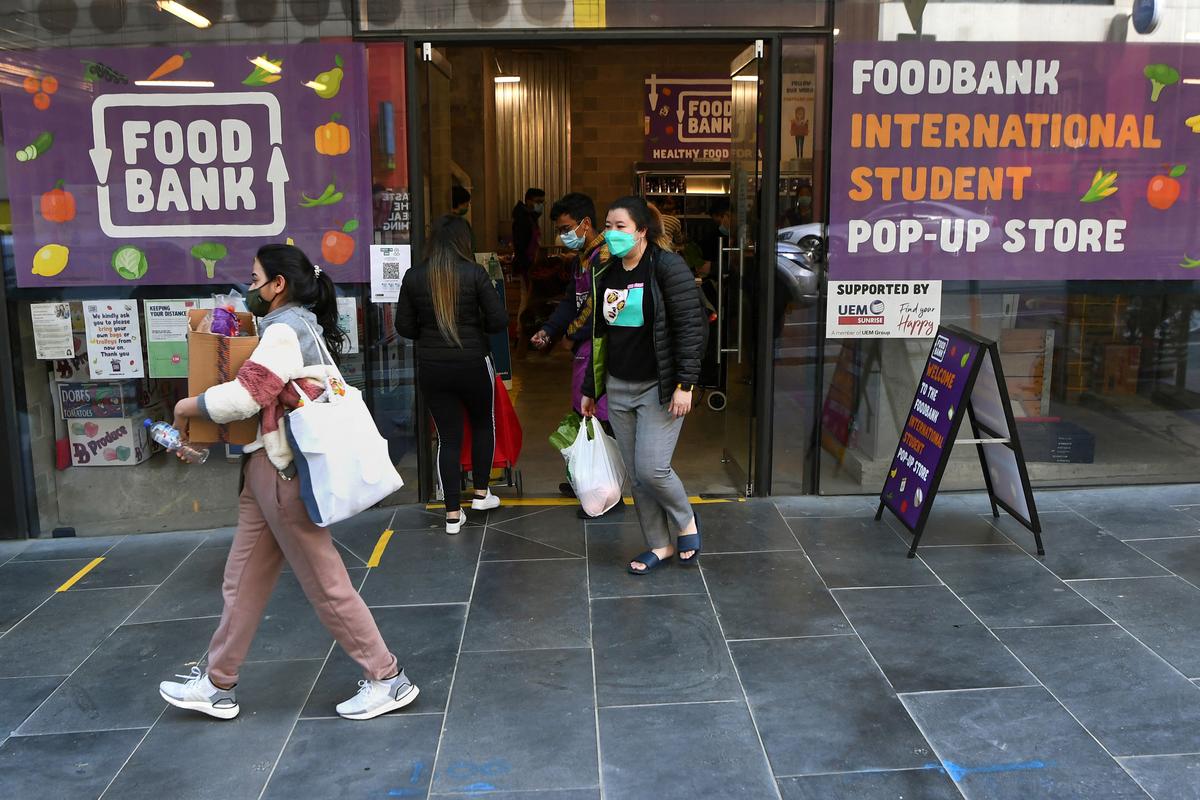
Both leaders also committed to cooperate at the United Nations, the World Trade Organisation, the G20, APEC, and the East Asia Summit.
They also reiterated the importance of the 1972 Joint Communiqué on the Establishment of Diplomatic Relations between the two countries and recommitted to maintaining its terms, which include Australia’s adherence to the “One China” policy—meaning Australia does not officially recognise Taiwan as a sovereign nation, but continues maintaining deep cultural and economic ties.
He again emphasised that bilateral trade was critical since China remains Australia’s largest trading partner and that this relationship supported one in four local jobs.
Before entering Parliament House, Mr. Li was accorded an honour guard and a cannon salute.
Yelling could faintly be heard, but it was almost impossible to determine whether it was from the army of supporters recruited, bussed in, fed and accommodated by local CCP officials, or from the many protesters who were there to object to Beijing’s actions in Tibet, against the Uyghur people, and against the Falun Gong faith group.
Both groups were corralled behind high wire mesh fences well outside the premier’s eyeline.
There were multiple reports of pro-Beijing demonstrators jostling rallygoers.
